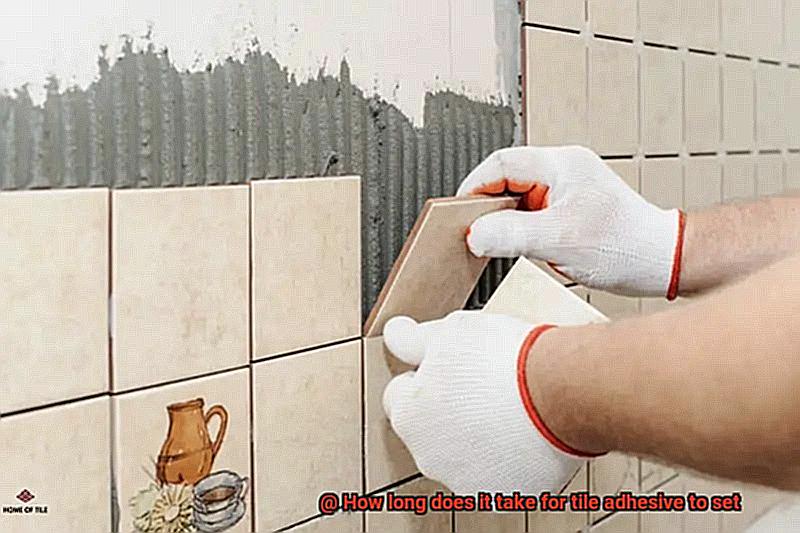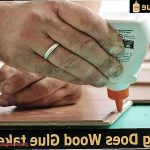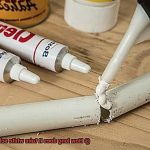If you’ve ever tackled a tiling project, you know that choosing the right adhesive is key to success. But once you’ve got the perfect adhesive in hand, you might be wondering just how long it takes for it to set and reach its full bonding strength.
Understanding the setting time is crucial because it determines when you can move forward with your project. In this article, we’ll break down the typical setting time for different types of tile adhesive and share some handy tips and tricks to ensure a flawless finish.
So, let’s jump right in and uncover everything you need to know about tile adhesive setting time.
Types of Tile Adhesives and Their Setting Times
Contents
- 1 Types of Tile Adhesives and Their Setting Times
- 2 Temperature and Humidity Effects on Setting Time
- 3 Size and Type of Tiles Impact on Setting Time
- 4 Substrate Preparation and Its Effect on Setting Time
- 5 Rapid-Setting Adhesives: Benefits and Limitations
- 6 Longer Setting Adhesives: Benefits and Limitations
- 7 Tips for Ensuring Proper Installation with Tile Adhesive
- 8 Conclusion
Transforming a space with beautifully installed tiles requires the right adhesive and allowing ample time for it to set. In this blog post, we will explore the various types of tile adhesives available and their approximate setting times. Let’s dive in and discover how to get those tiles set in no time.
Cement-based adhesives: The classics that stand the test of time.
Cement-based adhesives are renowned for their exceptional bonding strength and durability. They are commonly used for ceramic and porcelain tiles. However, they do have a longer setting time compared to other types of adhesives, typically taking 24 to 48 hours to fully set and cure. But rest assured, the wait is worth it for a long-lasting installation.
Epoxy adhesives: For ultimate water resistance and strength.
When it comes to areas with high moisture content, such as bathrooms and kitchens, epoxy adhesives are the go-to choice. They offer excellent water resistance and chemical resistance. Epoxy adhesives have a faster setting time compared to cement-based adhesives, usually setting within 48 to 72 hours. Be mindful of their quick-hardening nature once mixed.
Acrylic adhesives: Easy to use and versatile.
Acrylic adhesives provide a user-friendly experience for both DIY enthusiasts and professionals. They are suitable for various tile types, including ceramic, porcelain, and natural stone. Acrylic adhesives have a relatively short setting time, usually ranging from 2 to 4 hours. Their flexibility makes them ideal for areas with slight movement or vibration.
Pre-mixed adhesives: Convenience at its best.
For those seeking convenience, pre-mixed adhesives are the way to go. These ready-to-use adhesives eliminate the need for mixing and are perfect for small tiling projects. They have a setting time of 2 to 3 hours, allowing you to complete your installation swiftly and efficiently.
Rapid-setting adhesives: When speed is of the essence.
When time is of the essence, rapid-setting adhesives come to the rescue. These adhesives offer quick bonding and setting times, making them ideal for time-sensitive projects. With a setting time of 1 to 2 hours, you can proceed with grouting and other finishing touches sooner than you think.
Choosing the right tile adhesive is crucial for successful tile installation, and understanding their setting times allows you to plan your project effectively. Cement-based, epoxy, acrylic, pre-mixed, and rapid-setting adhesives each have their own unique characteristics and setting times.
By following manufacturer guidelines and considering factors like temperature, humidity, tile type, and substrate conditions, you can ensure a strong bond that will stand the test of time.
Temperature and Humidity Effects on Setting Time
Achieving a successful and durable tile installation requires careful consideration of the setting time of the adhesive. Temperature and humidity are two key factors that significantly influence how quickly the adhesive cures. In this article, we will explore the effects of temperature and humidity on the setting time of tile adhesive, providing valuable insights to help you achieve optimal results.
Temperature:
- Higher temperatures: When it comes to tile adhesive, heat is a catalyst for speed. Higher temperatures accelerate the chemical reactions within the adhesive, allowing it to cure more quickly. The increased energy from heat promotes faster bonding between the adhesive and the tiles.
- Lower temperatures: In contrast, lower temperatures can put the brakes on the curing process. Colder environments slow down chemical reactions, prolonging the setting time. It is important to note that excessively low temperatures can even prevent proper curing altogether.
Humidity:
- High humidity: Excess moisture in the air can have a detrimental effect on the setting time of tile adhesive. The presence of moisture interferes with water evaporation from the adhesive, slowing down drying and hardening processes. This extended drying time can compromise the integrity of the bond between the adhesive and tiles.
- Low humidity: Dry air facilitates faster evaporation of water from the adhesive, leading to a quicker setting time. However, it is crucial to strike a balance in low humidity conditions, as extremely dry air can cause premature drying and potential cracking.
Finding the Balance:
To ensure a successful tile installation, it is crucial to strike a balance between temperature and humidity.
- Consult manufacturer’s instructions: Different adhesives have specific temperature requirements for optimal performance. Refer to the manufacturer’s guidelines or product datasheet to determine the recommended temperature range.
- Monitor humidity levels: Keep an eye on humidity levels during installation. Avoid high humidity conditions that may prolong curing or extremely low humidity that may lead to premature drying.
Size and Type of Tiles Impact on Setting Time
Tile installation is an intricate process that relies heavily on the adhesive to create a strong and lasting bond. However, did you know that the size and type of tiles can significantly influence the setting time of the adhesive? In this article, we will explore the fascinating world of glue and delve into how these factors affect the setting time, ensuring a successful tile installation.
Size Matters:
When it comes to tile size, it’s no surprise that bigger tiles require more adhesive than their smaller counterparts. The larger surface area necessitates a greater amount of adhesive, leading to a longer drying time.
Additionally, the weight and thickness of larger tiles exert more pressure on the adhesive, slowing down the setting process. Conversely, smaller tiles have less surface area and are lighter, resulting in a shorter setting time.
Type Speaks Volumes:
The type of tile being installed also plays a role in setting time. For instance, ceramic tiles generally set faster compared to natural stone tiles. This is due to the porous nature of natural stone, which requires a longer curing period. It’s crucial to consult manufacturer guidelines to determine specific setting times for different tile types.
Temperature and Humidity:
Achieving the perfect balance between temperature and humidity is crucial for optimal adhesive curing. Higher temperatures expedite the setting process, while excessive moisture in the air can impede drying and compromise bond integrity.
Special Considerations:
Certain types of tiles may require specialized adhesives or techniques with longer setting times. Natural stone tiles often necessitate adhesives that provide flexibility during curing. Following manufacturer guidelines is paramount to ensure successful tile installation.
Substrate Preparation and Its Effect on Setting Time
Tile installations that stand the test of time are not just a stroke of luck. The secret lies in the careful preparation of the substrate, or the surface on which the tiles are installed. Substrate preparation plays a vital role in determining the setting time of tile adhesive, ultimately impacting the strength and durability of the bond.
One critical aspect of substrate preparation is surface texture. A smooth and even surface allows for better contact between the adhesive and the tiles, resulting in a stronger bond. Conversely, a rough or uneven surface can create gaps or voids, weakening the bond and leading to cracked or loose tiles over time.
Moisture content is another key factor to consider. Excessive moisture can dilute the adhesive and weaken its bonding strength. It can also promote the growth of mold or mildew, compromising the integrity of the installation. Ensuring that the substrate is dry and free from moisture is crucial for achieving a successful tile installation.
Temperature conditions also play a role in setting time. Extreme temperatures, both high and low, can affect the curing process and alter setting times. It is essential to follow manufacturer guidelines regarding temperature ranges for optimal adhesive performance. In some cases, specialized adhesives designed for extreme conditions may be necessary.
To illustrate the impact of substrate preparation on setting time, let’s consider two examples. In the first scenario, a concrete floor is thoroughly cleaned, leveled, and primed before applying the adhesive. The surface is dry, and temperature and humidity conditions are within the recommended range. As a result, the adhesive sets quickly and forms a strong bond with the tiles.
In contrast, in the second scenario, a plywood substrate is not properly cleaned or leveled. The surface has some moisture content due to poor ventilation, and temperature conditions are outside of the recommended range. As a result, the adhesive takes longer to set and may not form a strong bond with the tiles, leading to potential issues in the future.
Rapid-Setting Adhesives: Benefits and Limitations
When it comes to adhesives, the time it takes for them to set can make or break a project. Enter rapid-setting adhesives, the superheroes of glues. These miracle workers offer a plethora of benefits that save time, effort, and money. However, like everything in life, they have their limitations. So, let’s delve into the world of rapid-setting adhesives and uncover why they are an absolute must-have for any DIYer.

Benefit 2: Unmatched Versatility
Ever find yourself rummaging through your toolbox for different adhesives for different materials? It’s tedious and downright exasperating. Fear not, for rapid-setting adhesives are here to simplify your life. They possess an extraordinary ability to bond various materials seamlessly. Whether it’s ceramic tiles, glass, metal, or stubborn plastics, these adhesives have got what it takes to forge unyielding and enduring connections.
Benefit 3: Indestructible Strength
Strength is non-negotiable when it comes to adhesives. Rapid-setting adhesives rise to the occasion with unwavering might. Once fully cured, they create bonds that can withstand Herculean loads and defy bone-rattling impacts. Whether you’re fixing a wobbly chair leg or crafting a masterpiece, rest assured that your project will stand the test of time.
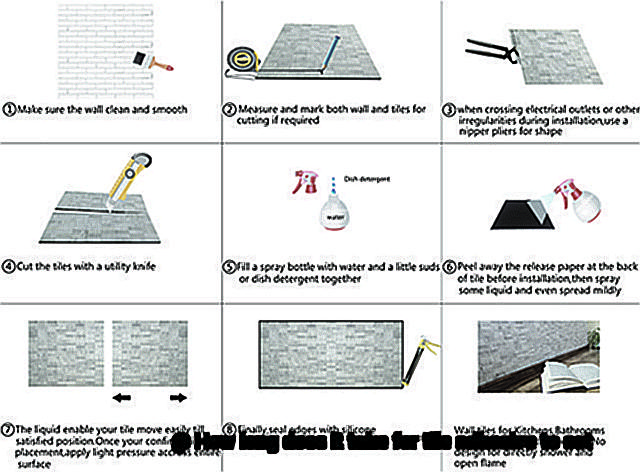
Limitation 1: Time Is of the Essence
While the swift curing time of rapid-setting adhesives is undoubtedly an advantage, it can also be a limitation. These glues require precise and efficient application, as they spring into action within moments of being applied. Quick reflexes and preparedness are vital. Ensure everything you need is within arm’s reach before embarking on your adhesive adventure.
Limitation 2: Not One Size Fits All
As versatile as rapid-setting adhesives are, they may not be the best fit for every project. If you crave flexibility or require adjustment time during the bonding process, a slower-setting adhesive might be your match. Additionally, heed the manufacturer’s instructions and recommendations, for some rapid-setting adhesives may not be compatible with certain materials.
Longer Setting Adhesives: Benefits and Limitations
Imagine being in the midst of a tile installation project, meticulously aligning each tile to create a stunning pattern. Suddenly, you notice a slight misalignment and panic sets in. Fear not, my friends. Let me introduce you to the superheroes of adhesives – longer setting adhesives. In this blog post, we’ll explore the benefits and limitations of using these powerful glues for your tile installations.
Flexible Adjustments and Precise Alignment:
One of the major advantages of longer setting adhesives is their extended working time. This means you can make adjustments and reposition tiles even after the adhesive has been applied. Whether you’re dealing with intricate patterns or large format tiles, you’ll have ample time to ensure precise alignment and spacing. Say goodbye to sleepless nights worrying about crooked lines. With longer setting adhesives, perfection is within reach.
Enhanced Bond Strength and Durability:
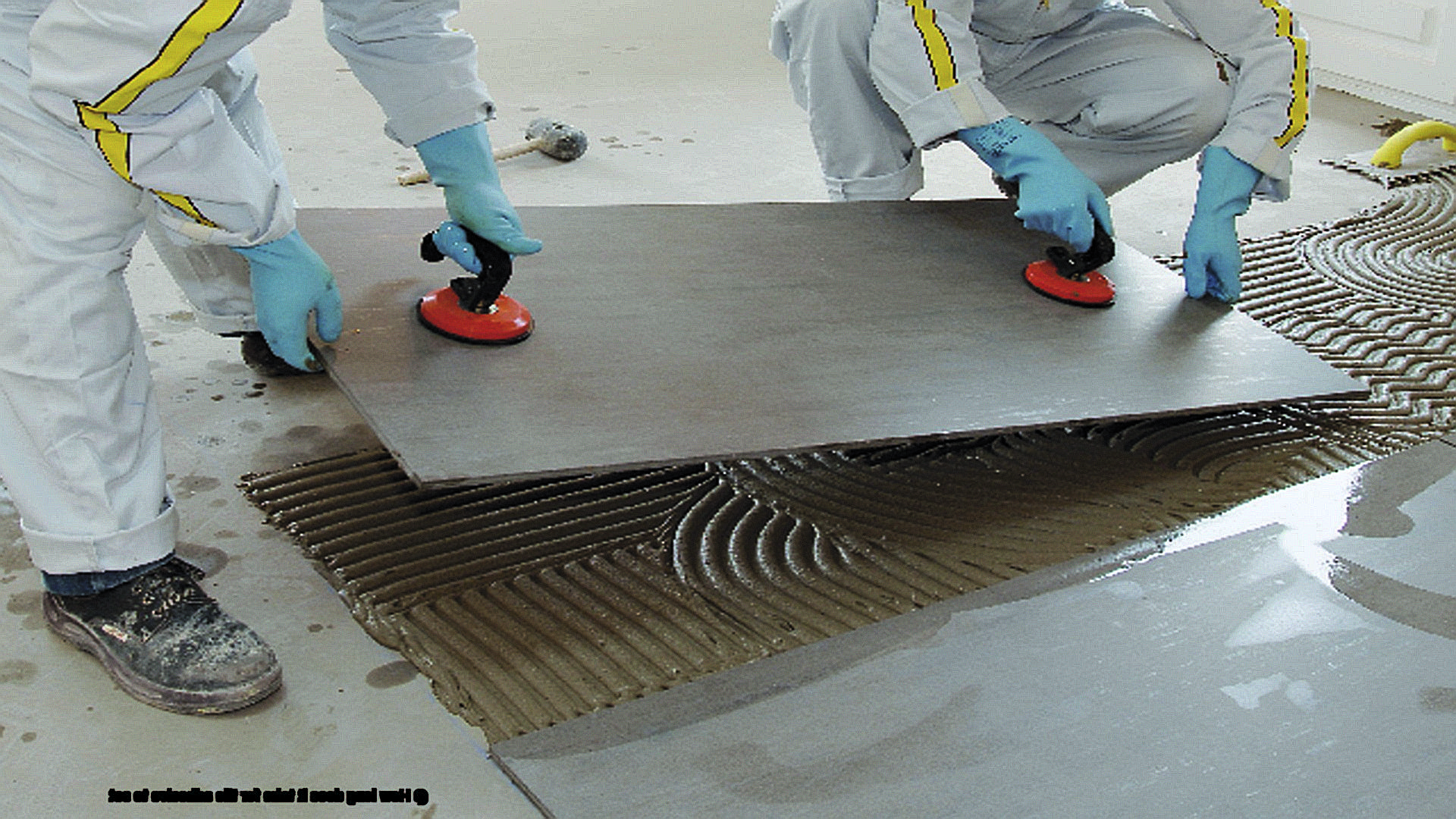
Longer setting adhesives don’t just offer flexibility; they also deliver superior bond strength and durability. With their extended curing time, these glues provide a thorough drying and bonding process. The result? A stronger, longer-lasting bond between the tile and the substrate. No more worries about tiles detaching or cracks appearing over time. Longer setting adhesives create an unbreakable union that stands the test of time.
Resistance to Sagging and Slippage:
Installing heavyweight or large format tiles? Longer setting adhesives are your secret weapon against sagging or slippage. The extended working time allows the adhesive to dry and set properly, preventing tiles from sliding down or sagging under their weight. You can now confidently install those beautiful statement tiles without fearing a disastrous collapse. Longer setting adhesives provide a solid foundation for your artistic visions.
Limitations to Consider:
While longer setting adhesives offer remarkable advantages, it’s important to consider their limitations. These glues are not suitable for time-sensitive projects or those with quick turnarounds. They do require patience as they significantly extend the overall installation timeline. Moreover, some longer setting adhesives may have specific temperature and humidity requirements for optimal performance, so following the manufacturer’s instructions is crucial. Understanding and planning for these limitations will ensure a successful tile installation.
Tips for Ensuring Proper Installation with Tile Adhesive
Installing tiles with adhesive can transform any space into a beautiful and functional area. However, the key to a successful installation lies in following the proper steps. In this article, we will discuss some essential tips to ensure a proper installation with tile adhesive.
Prepare the Surface
The foundation of any successful tile installation is a properly prepared surface. Before applying tile adhesive, meticulously clean the surface to eliminate dust, dirt, and debris. Repair any cracks or uneven areas to create a smooth and level surface for the adhesive to adhere to.
Choose the Right Adhesive
Not all adhesives are created equal, and different types of tiles require specific adhesives. To ensure proper installation, select an adhesive that is suitable for the type of tile you are using. Refer to the manufacturer’s instructions to determine which adhesive will work best for your project.
Follow Manufacturer’s Instructions
Every adhesive product comes with detailed instructions from the manufacturer. It is crucial to read and follow these instructions meticulously. Pay attention to factors such as recommended drying time, mixing ratios, and application techniques. Following the manufacturer’s guidelines will guarantee a proper installation.
Apply Adhesive Evenly
Achieving proper coverage and adhesion between the tile and substrate is vital for a strong bond. When applying tile adhesive, use a notched trowel to spread it evenly across the surface. This ensures consistent coverage and prevents weak spots or potential failure in the future.
Allow Sufficient Curing Time
Patience is key when it comes to tile adhesive installation. After applying the adhesive and placing the tiles, allow sufficient curing time for it to set properly. The recommended curing time can vary depending on factors such as temperature, humidity, and the type of adhesive used. Always refer to the manufacturer’s instructions for the specific curing time required.
qrNu0g_zC74″ >
Conclusion
In conclusion, the setting time of tile adhesive is a critical factor in the success of your tiling endeavor. Understanding the various types of adhesives and their respective setting times allows you to plan effectively and achieve a durable bond that will withstand the test of time.
Cement-based adhesives are renowned for their exceptional bonding strength, but they require patience as they take 24 to 48 hours to set. On the other hand, epoxy adhesives offer excellent water resistance and have a faster setting time of 48 to 72 hours. If ease of use is your priority, acrylic adhesives are your go-to option with a setting time ranging from 2 to 4 hours. For those seeking convenience, pre-mixed adhesives dry within 2 to 3 hours. And if speed is of utmost importance, rapid-setting adhesives provide quick bonding and setting times, usually within 1 to 2 hours.
Temperature and humidity also wield significant influence over the setting time of tile adhesive. Higher temperatures accelerate curing, while lower temperatures slow it down. Meanwhile, high humidity can prolong drying, whereas low humidity facilitates faster evaporation.
The size and type of tiles can also impact how long it takes for the adhesive to set. Larger tiles necessitate more adhesive and thus require longer drying times. Additionally, certain types of tiles may call for specialized adhesives or techniques that involve longer setting times.
Proper preparation of the substrate is crucial for achieving a successful installation. A smooth surface ensures better contact between the adhesive and tiles, while excessive moisture can compromise bonding strength.
Rapid-setting adhesives offer lightning-fast curing times along with versatility and strength; however, they demand precise application techniques. Conversely, longer setting adhesives allow for flexible adjustments during installation while providing enhanced bond strength and resistance against sagging—though this does extend installation timelines.

